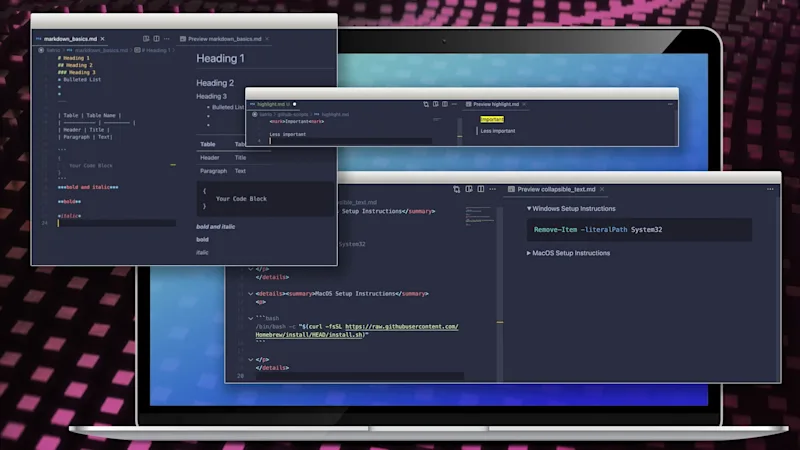Modern applications allow for dynamic infrastructure to scale up to meet demand or or scale down to conserve cost, which can be very hard if you're managing your infrastructure manually. On top of this, managing multiple clouds, servers, and environments can be challenging. For this reason, organizations have now started to adopt a new concept called infrastructure as code (IaC), where you can define your infrastructure in the source code rather than doing it manually. There are several tools available on the market for IaC. But given the maturity, wide range of supported platforms, and well-versed documentation, Terraform is the industry leader in this space.
In this article, you'll get to know Terraform, its different use cases, and why leveraging it could be a good choice for you and your organization.
Terraform is an open-source infrastructure as code (IaC) tool that enables users to define and manage cloud infrastructure in a declarative and reproducible manner.
What Is Terraform?
Terraform is an open-source infrastructure as code (IaC) tool that allows users to define and manage their cloud infrastructure in a declarative and reproducible manner. Terraform is written in the Go language and is developed and maintained by HashiCorp. With Terraform, developers and operators can define their desired infrastructure state as code. This enables them to create, modify, and destroy resources across multiple cloud providers using a single, consistent workflow. By providing a simple yet powerful interface for managing infrastructure, Terraform allows teams to collaborate more efficiently and deliver infrastructure changes with greater speed and confidence.
Terraform is designed to be cloud-agnostic, meaning it supports multiple cloud providers such as Amazon Web Services (AWS), Microsoft Azure, Google Cloud Platform (GCP), and other infrastructure providers. This makes it easy for organizations to manage their cloud infrastructure across multiple providers using a single, unified tool.
One of the key advantages of Terraform is that it allows infrastructure to be versioned and managed. Teams can collaborate more effectively on infrastructure changes, maintain a history of changes, and roll back changes if necessary.
What Are the Use Cases of Terraform?
1. Multi-Cloud Management
Deploying your applications to a single region or individual cloud provider may leave room for a cloud provider outage issue. This means if this cloud provider goes down, your entire application will go down. To prevent this, organizations may deploy applications to multiple cloud providers. That way, if one goes down, another would still be able to serve the application.
Terraform allows you to configure your infrastructure over multiple cloud providers like AWS, Azure, etc. by using the same workflow. This makes management and orchestration for large, multi-cloud infrastructures simpler. Using a single workflow also saves on costs and time, as you don’t need to utilize multiple cloud deployment tools.
2. Self-Service Infrastructure
When infrastructure management is done manually, application development teams have to request different infrastructure components from the operations team. After submitting a request, the development team waits for the infra/ops team to review and process the request. There is often no guarantee that the work will be done in a timely manner. This can lead to reduced productivity, increased cost of idle resources, increased infrastructure management risk, wasting of resources, etc.
Using a self-service approach with Terraform, development teams can handle their own infrastructure without any help from the operations team. Since provisioning infrastructure with Terraform requires the use of a code-based approach, teams can make and deploy changes directly. When working on similar projects, teams can leverage Terraform modules to manage similar parts of their infrastructure, which saves time and effort (and cost)t. Using Terraform modules also standardizes the workflow across all the applications being developed by organizations.
3. Multi-Tier Applications
A multi-tier application comprises multiple layers, constantly interacting with each other to get the work done. Separating the frontend, service layer (application layer), and data layer (database) is the primary goal of multi-tier architecture. This allows each layer of application to be managed separately. Each of these layers has its own requirements of infrastructure, which could be complex to maintain if done manually.
Terraform does a phenomenal job of creating and managing a multi-tier application architecture. You can define the required collection of infrastructure resources in each layer. Terraform can create and maintain all of these resources, and it also maintains the link between all the required layers. Terraform can help orchestrate delivery of an application’s entire infrastructure stack and provide environment-specific configuration for each component - and it does this in a repeatable way. When combined with automation, Terraform can be used to add or remove infrastructure resources as needed to scale up or down multi-tier applications.
4. Creating and Removing Environments
Any modern application development goes through several different stages, which can include moving through environments like development, testing, staging, and production. All these stages can also be considered different environments which have their own specific infrastructure needs. Terraform allows you to parameterize the infrastructure in your environment to support multiple environments. And if there's a need for common infrastructure (for example, in staging and production), you can utilize the same Terraform config (in HCL language) for all those environments.
Sometimes there's also a requirement for a short-lived test environment that works for testing some new features. Using Terraform, you can create these environments with the appropriate infrastructure. Also, you can destroy any environment and deallocate its resources using Terraform very easily.
5. Continuous Integration and Delivery
Terraform can be used as part of a continuous integration and continuous delivery (CI/CD) pipeline to automate the deployment, provisioning, and management of infrastructure resources. This allows for consistent and reproducible deployments. It also enables templating, which makes it possible to define infrastructure resources once and deploy them across multiple environments, including development, staging, and production.
When combined with automation, Terraform ensures that the infrastructure is always in sync with the latest code changes. Finally, Terraform enables the infrastructure to be tested just like code. Utilizing tools like Terratest, testing can be performed on the infrastructure code to ensure that the infrastructure works as expected and meets the performance requirements.
6. Working with PaaS Tools
PaaS tools are actually infrastructure as well. Deploying an application requires more than just provisioning the infrastructure. You also need tools for cluster management, caching, routing, etc. for the entire application to work. For example, you might be using Kubernetes for deploying containers across hardware for containerized applications.
Using Terraform, you can deploy your applications to Kubernetes and manage its resources (e.g., pods, deployments, services, etc.). We may suggest a different tool for that at scale, but Terraform enables a common approach to PaaS and other infrastructure management. Beyond just Kubernetes, Terraform enables you to work with all the popular PaaS tools like SAP, Salesforce, etc.
How Can We Leverage Terraform?
Now that you've seen different use cases of Terraform, it's time to discuss why you should care about leveraging Terraform in your organization. In this section, you'll see the different benefits of using Terraform.
1. Create Disaster Recovery
Terraform makes recovery from disasters much easier than manual configuration. When you create and maintain the infrastructure manually, you need to spend time and effort to rebuild the systems. Terraform makes use of infrastructure as code that can help you rebuild and manage the entire infrastructure at scale. Your environment will be available as quickly as the platform allows.
2. Increase Safety
Terraform automates the process of creating and updating infrastructure resources. This reduces the risk of human error and makes it easier to ensure that security controls are consistently applied across all resources. It can be used to keep your infrastructure up-to-date with compliance requirements, such as PCI-DSS, HIPAA, or GDPR. By defining your infrastructure as code, you can make sure that all required security controls are in place, and that your infrastructure is regularly audited and tested.
3. Improve Speed and Ease of Use
Terraform enables automation with the help of scripts. This makes the provisioning of infrastructure rapid and easy. Using a single easy-to-run script, you can manage the infrastructure for multiple similar projects. Terraform can increase speed and ease of use by providing a consistent, automated, and collaborative way to manage infrastructure resources. By treating infrastructure as code, automating the deployment process, supporting multiple cloud providers, and offering an easy-to-use language for defining resources, Terraform can help to speed up the process of creating and updating infrastructure, making it easier to manage changes and ensuring consistency across environments.
With Terraform, you can use a version control system, such as Git, to manage changes to infrastructure resources.
4. Enable High Collaboration
With Terraform, you can use a version control system, such as Git, to manage changes to infrastructure resources. This makes it easy for teams to collaborate on changes and track the history of those changes. By using a version control system, teams can review changes, provide feedback, and ensure that changes are consistent across all environments. It also integrates with several collaboration tools. For example, Slack and Jira can help to streamline communication and collaboration between team members. By using these tools, teams can stay up-to-date on infrastructure changes and collaborate more effectively.
5. Reduce Errors
Using Terraform can help reduce errors when managing infrastructure resources by treating infrastructure as code. Also, it allows you to preview changes before they're deployed, validate code, roll back changes via source controls. By using these features, teams can identify and fix errors before they deploy the application. This can help to minimize downtime and reduce the risk of errors.
6. Create Consistency
Terraform can help increase consistency in managing infrastructure resources by providing a version-controlled, modular, and centralized way to manage changes to infrastructure resources. By treating infrastructure as code, using version control, reusing modules, using a centralized state file, and ensuring that changes are made through the infrastructure code, Terraform can help to ensure that changes are consistent across all environments.
Conclusion
Terraform is a powerful tool for managing infrastructure resources as code and managing changes across multiple environments. From automating infrastructure provisioning and enabling multi-cloud management to simplifying the self-service architecture and facilitating continuous delivery and deployment, Terraform offers a multitude of use cases for organizations of all sizes and types. Whether you're a developer, infrastructure engineer, or operations professional, Terraform offers a flexible and robust solution for managing infrastructure in a scalable and efficient manner.

